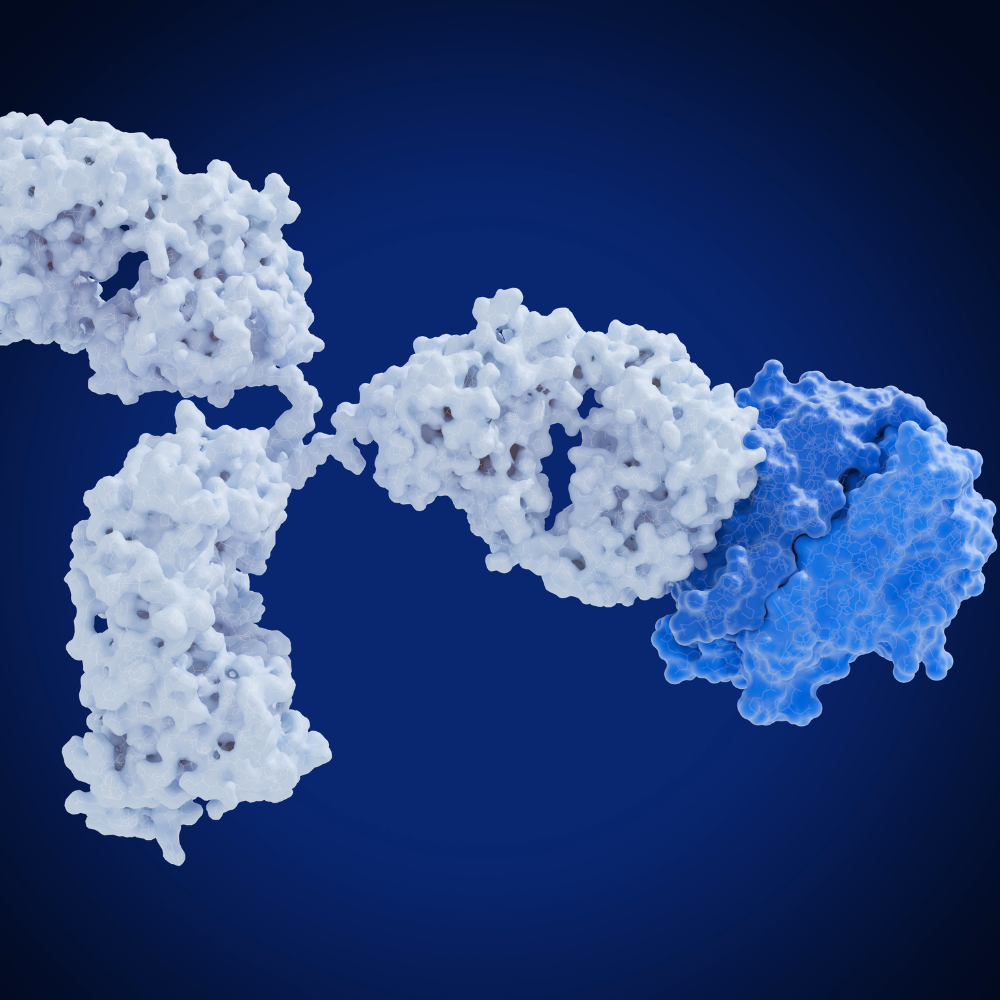High-throughput screening has become an indispensable tool in medical diagnostics, allowing pathologists to screen a large number of patient samples quickly and efficiently. First developed in the 1990s for drug discovery, high-throughput screening was quickly adapted for diagnostic purposes and evolved from traditional methods to sophisticated, technology-driven systems. The ongoing integration of new technologies such as assay miniaturization, automation, and robotics will shape the future of high-throughput diagnostic screening, offering faster, more accurate, and personalized diagnostic solutions for a wide range of medical conditions.
 At the heart of high-throughput platforms are molecular enzymes that drive the assay reaction and influence an assay’s precision and performance. High-throughput platforms require specific enzyme solutions that are sensitive, specific, fast, stable, and enable a simplified workflow. Key features required to support high throughput diagnostic platforms include room-temperature stability, compatibility to fit several formats (e.g. glycerol-free), and suitability for multiplex assays. Carefully selected reagents contribute to a robust signal, minimizing false signals and enhancing the overall quality of the diagnostic screening data. In this blog, we will delve into the top criteria that diagnostic assay developers should consider when selecting reagents for their high-throughput assays.
At the heart of high-throughput platforms are molecular enzymes that drive the assay reaction and influence an assay’s precision and performance. High-throughput platforms require specific enzyme solutions that are sensitive, specific, fast, stable, and enable a simplified workflow. Key features required to support high throughput diagnostic platforms include room-temperature stability, compatibility to fit several formats (e.g. glycerol-free), and suitability for multiplex assays. Carefully selected reagents contribute to a robust signal, minimizing false signals and enhancing the overall quality of the diagnostic screening data. In this blog, we will delve into the top criteria that diagnostic assay developers should consider when selecting reagents for their high-throughput assays.
Enzyme Sensitivity and Specificity
Many high-throughput assays now incorporate multiplex screening panels that can detect over twenty targets simultaneously. To achieve precise target detection in multiplexing, high enzyme sensitivity and specificity are essential for differentiating between targets that may share similar structures and be present in varying concentrations. An assay with a wide dynamic range can detect a broad range of template concentrations without reaching saturation, providing better assay accuracy even at extremely low or high analyte concentrations. Overall, designing a high-throughput multiplex assay requires careful optimization of assay conditions, such as reaction kinetics, buffer composition, and temperature. Balancing these parameters for multiple targets simultaneously can be challenging, as changes that benefit one analyte may negatively impact others. Ready-made master mixes can help save time and effort during assay optimization and circumvent the tedious process of individually optimizing reaction conditions for each target. Alternatively, enzymes that are supplied with specialized buffers are also typically formulated to provide optimal conditions, requiring little optimization, they may also contain additives or stabilizers that enhance the sensitivity of an assay.
High-Throughput Assay Development: Compatibility
In high-throughput assays, where speed and efficiency are paramount, addressing reagent compatibility in the planning stages reduces the likelihood of encountering errors during assay development and the need to perform extensive troubleshooting. For high-throughput platforms that use automated liquid handling systems or robotic platforms, ideal regent features include high concentration and low viscosity to ensure precise dispensing. Glycerol-free reagents are a popular solution as they eliminate potential interference with downstream applications, reduce background noise, and are compatible with automated systems requiring low viscosity.
High-Concentration:
Enzymes and mixes provided at high concentrations (e.g. 50 U/µL or greater) offer several benefits for high-throughput applications, including accelerated reaction kinetics, enhanced enzymatic activity, smaller reaction volumes, and greater flexibility in assay design.
High-concentration enzymes often provide more consistent and reliable performance and contribute to better cost-effectiveness as less enzyme is needed to perform the reaction, which can be particularly important in large-scale applications where cost efficiency is a significant consideration.
 Glycerol-free Reagents:
Glycerol-free Reagents:
Glycerol, which is a common component in enzyme storage buffers, serves as a cryoprotectant and protein stabilizer, but it can increase the viscosity of a reagent and introduce pipetting challenges.
Glycerol-free enzymes are valuable in enhancing user precision during liquid handling and are particularly suitable for fast robot-aided automation processes. In addition, enzymes and master mixes that are glycerol-free can be lyophilized or air-dried to create room-temperature stable assays. Benefits to room-temperature stable assays include simplified, refrigeration-free shipping and storage logistics as well as increased shelf-life, as room-temperature stability can reduce the risk of reagent degradation during transportation or storage. Overall, room-temperature stable assays are more cost-effective to transport and contribute to more sustainable laboratory practices, reducing the environmental impact associated with assay production, storage, and transportation.
Hot Start Enzymes:
Hot start enzymes enhance an assay’s precision, sensitivity, and reliability by inhibiting the activity of the DNA polymerase during the initial PCR setup. This is particularly important in high-throughput systems where reactions are prepared in bulk and multiple reactions are conducted simultaneously. Specifically, hot start enzymes maintain optimal reaction conditions during the entire setup process, reducing the risk of both unintended amplification and formation of primer-dimer artifacts.
There are different types of hot start enzymes, and they can be classified based on the mechanisms used to inhibit the polymerase activity. The primary types include:
Chemical-mediated: Chemical modifications are added to the enzyme to inhibit polymerase activity at lower temperatures
Antibody-mediated: Antibodies specific to the polymerase physically block its active site at lower temperatures
Aptamer-mediated: Aptamers (short DNA sequences) specifically bind to the polymerase, reversibly inhibiting its activity at lower temperatures
Each type of hot start enzyme has advantages and characteristics that can impact the assay reaction and workflow, especially in the reaction set-up and activation time. When selecting a hot start enzyme for high-throughput applications, it is crucial to consider factors such as the sample volume, instrumentation, and sample type.
Conclusion
Selecting the best reagents for high-throughput assays is critical to developing a successful assay. Reagents that are easy to handle and require minimal preparation contribute to the efficiency of high-throughput assays, while enzyme performance directly impacts assay precision and accuracy. In addition to high quality and consistency, assay developers should also consider the cost-effectiveness of reagents. Evaluating the overall cost of reagents against the performance of the assay and its intended use is vital. Some high-quality reagents may come at a higher price, but the investment can be justified if they contribute to the overall success and reliability of the assay.
Meridian supports diagnostic manufacturers with enzymes suitable for all types of applications, including high-throughput systems. From high concentration and glycerol-free enzymes to lyophilization-ready master mixes and polymerases with different types of hot start, Meridian supplier reputation for quality control, customer support, and responsiveness to issues has solidified its position as a trusted partner for diagnostic manufacturers.
To learn more about our high-throughput molecular assay solutions



